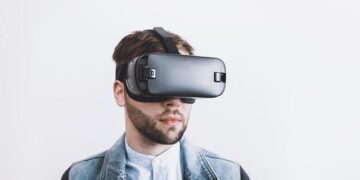On Tuesday, NASA’s dedicated team aboard the International Space Station made significant strides in advancing astronaut health while methodically unpacking newly arrived cargo. As the crew carefully organized critical supplies and scientific equipment, researchers on the ground and in orbit collaborated to conduct pioneering studies aimed at safeguarding the wellbeing of space travelers during extended missions. This dual focus on operational logistics and cutting-edge biomedical research underscores NASA’s commitment to preparing for future exploration beyond low Earth orbit.
Tuesday’s Space Station Research Focuses on Enhancing Astronaut Health During Extended Missions
Today aboard the International Space Station (ISS), astronauts focused on critical biomedical experiments designed to mitigate the health challenges faced during long-duration spaceflight. By investigating the effects of microgravity on muscle atrophy and bone density loss, researchers aim to develop targeted countermeasures that will keep crew members fit and healthy for upcoming missions to the Moon and Mars. Among the key activities, the crew unpacked newly arrived cargo containing advanced monitoring devices and nutritional supplements, which will support ongoing studies examining astronaut metabolism and immune response.
Key experiments and equipment introduced this Tuesday include:
- Wearable biosensors for continuous health tracking
- Customized resistance exercise devices
- Enhanced dietary formulations rich in antioxidants and vitamins
| Experiment | Objective | Duration |
|---|---|---|
| Muscle Atrophy Study | Assess muscle loss rates in microgravity | 6 months |
| Bone Density Monitoring | Track skeletal health to prevent fractures | 12 months |
| Immune Response Analysis | Understand immune system changes in space | 4 months |
Detailed Analysis of Cargo Unpacking Procedures and Their Impact on Crew Efficiency
Recent research aboard the International Space Station has highlighted how the nuances of cargo unpacking directly influence the operational efficiency and well-being of the crew. NASA scientists meticulously observed the unpacking workflows, discovering that optimized organization and task division allowed astronauts to reduce physical strain and mental fatigue. These procedural adjustments not only minimized time spent on inventory management but also enhanced overall mission productivity, underscoring the intertwined relationship between physical task design and crew health.
Key factors identified as essential for improving crew efficiency include:
- Ergonomic placement of frequently used items to reduce unnecessary movement.
- Clear labeling systems facilitating rapid item identification.
- Structured task allocation that balances workload among crew members.
| Procedure Aspect | Impact on Crew | Efficiency Gain |
|---|---|---|
| Ergonomic Storage | Reduced muscle strain | 20% |
| Labeling Accuracy | Faster retrieval times | 15% |
| Collaborative Planning | Lower cognitive load | 18% |
Recommendations for Optimizing In-Orbit Research to Support Long-Duration Spaceflight Wellness
Maximizing the benefits of in-orbit experiments requires a holistic approach, integrating both physiological monitoring and environmental controls. Prioritizing real-time data analysis paired with adaptive countermeasures can substantially enhance crew health outcomes. Emphasizing continuous blood pressure tracking, sleep cycle regulation, and muscle atrophy prevention allows researchers to tailor interventions promptly, addressing subtle changes before they escalate. Additionally, fostering collaboration between ground teams and astronauts through seamless communication technologies ensures that findings translate rapidly into actionable wellness strategies.
Key strategies for boosting research efficacy include:
- Implementing automated health diagnostics that reduce manual input and human error
- Incorporating environmental sensors to monitor cabin air quality and radiation exposure
- Developing modular experiments adaptable to mission timeline changes
- Prioritizing psychological well-being through virtual reality and creative outlets
| Research Component | Impact on Crew Wellness |
|---|---|
| Cardiovascular Monitoring | Early detection of cardiac stress |
| Musculoskeletal Assessments | Prevention of bone density loss |
| Sleep Pattern Analysis | Improved cognitive function |
| Environmental Sensing | Maintained habitat safety |
Final Thoughts
As Tuesday’s station research continues to yield valuable insights into astronaut health, the ongoing efforts to unpack and manage incoming cargo are proving essential to supporting long-duration missions. NASA’s integrated approach, combining scientific investigation with logistical operations aboard the International Space Station, underscores the agency’s commitment to advancing human spaceflight. These developments not only enhance crew well-being in orbit but also pave the way for future exploration beyond Earth.































